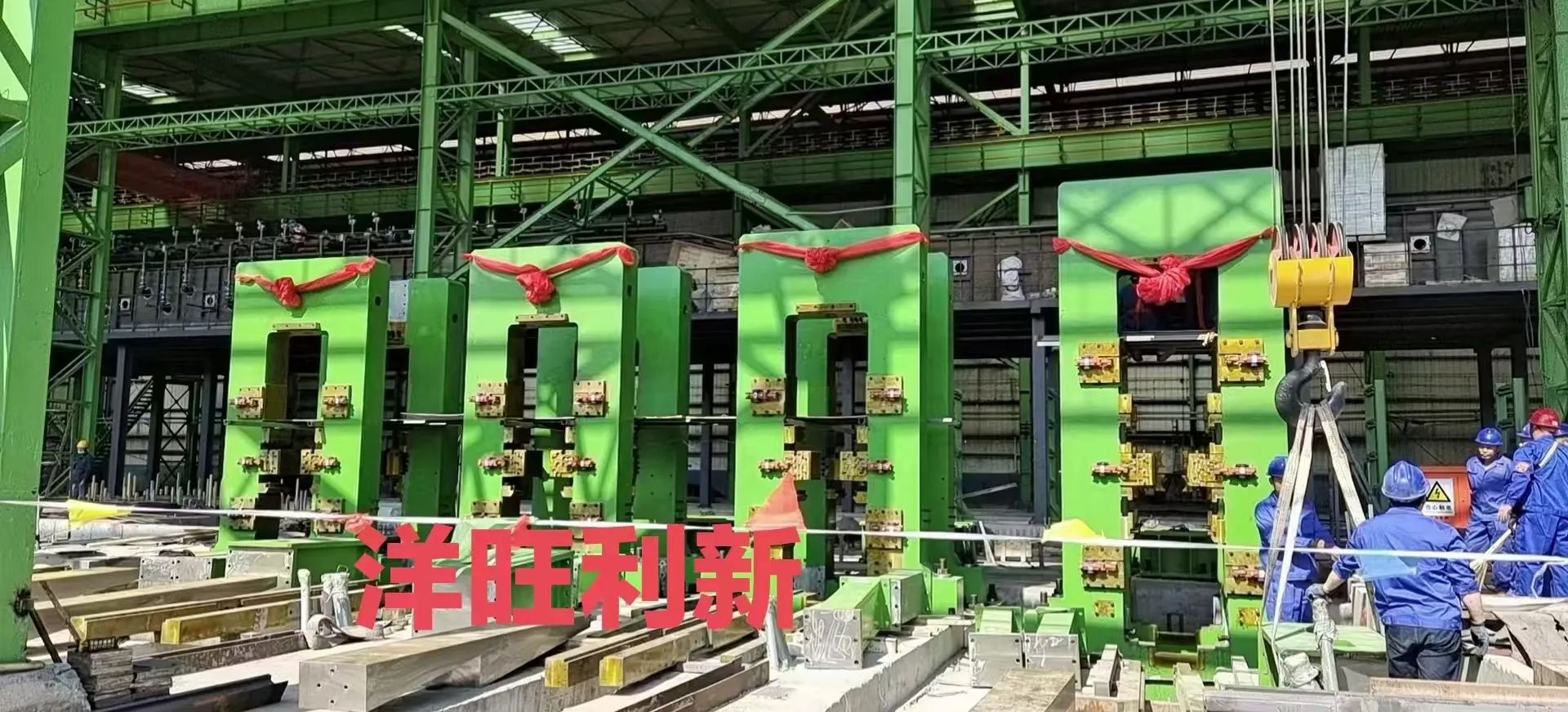
Hot Rolling Mill Technology: Process and Equipment Innovations
The hot strip mill process represents one of the most sophisticated metal forming operations in modern metallurgy, transforming steel slabs into precisely dimensioned coils through carefully controlled thermal-mechanical treatment.

Hot Rolling Mill Equipment Architecture
Contemporary hot rolling mill equipment embodies decades of mechanical engineering refinement, combining brute force with micron-level precision. The roughing train typically features one or two high-horsepower reversing mills with large diameter work rolls capable of withstanding extreme rolling forces up to 45,000 kN. These massive structures incorporate hydraulic screwdown systems for rapid gap adjustment between passes, while advanced roll bending systems counteract deflection across the roll barrel length. The finishing mill represents even greater technological sophistication, with tandem four-high stands employing smaller diameter work rolls backed by larger backup rolls for improved rigidity.
State-of-the-art hot rolling machines integrate hydraulic automatic gauge control (HAGC) systems that maintain thickness tolerances within ±25 microns through continuous roll gap adjustment at response speeds exceeding 50 Hz. Between stands, loopers maintain controlled interstand tension while allowing for thermal expansion, with the entire finishing train synchronized through digital automation systems processing thousands of data points per second. Downstream, the laminar cooling section precisely controls cooling rates through hundreds of individually controllable water headers, determining the final steel microstructure and mechanical properties before coiling.
Process Control Systems in Modern Hot Rolling Press Operations
The operational excellence of a hot strip mill process relies fundamentally on its integrated control architecture, where multiple subsystems work in concert to maintain process stability. Advanced mathematical models calculate optimal rolling schedules considering slab chemistry, target dimensions, and equipment capabilities, automatically adjusting mill setup parameters for each coil. Temperature management systems monitor thermal profiles using pyrometers and thermal cameras, dynamically modifying rolling speeds and cooling patterns to maintain ideal deformation conditions.
Shape control has evolved remarkably through the implementation of work roll shifting systems in the hot rolling press, which continuously vary the position of rolls to prevent periodic wear patterns and maintain consistent strip flatness. Modern mills employ multivariable predictive control algorithms that anticipate disturbances and preemptively adjust process parameters, compensating for variables like roll thermal expansion and mill stretch during acceleration. These sophisticated control strategies enable contemporary hot rolling mill equipment to produce increasingly demanding steel grades while maintaining tight geometrical tolerances and superior surface quality.
Future Directions in Hot Rolling Mill Technology
The next generation of hot rolling mill equipment is poised to incorporate groundbreaking innovations that will further transform steel production. Hydrogen-based slab reheating technology promises to dramatically reduce the carbon footprint of hot rolling operations while maintaining precise temperature control. Advanced sensor networks incorporating fiber-optic temperature monitoring and embedded roll force sensors will provide unprecedented process visibility, enabling even more precise control of mechanical properties.
The development of self-learning control systems that adapt to changing roll wear patterns and equipment conditions will further enhance process stability and product consistency. Emerging technologies like electromagnetic edge guiding may eventually replace traditional mechanical side guides, reducing edge defects and improving yield. As steel products continue evolving toward higher strength and more specialized applications, hot strip mill manufacturers are responding with equipment capable of precisely controlling increasingly complex thermomechanical processing paths, ensuring the hot rolling process remains the foundation of flat steel production well into the future.
-
Indian Clients Visit YWLX to Inspect Skin-pass MillNewsJun.22,2025
-
Typical Products from Reversing Cold Rolling ProcessNewsMay.26,2025
-
Surface Finish Improvement through Skin Pass RollingNewsMay.26,2025
-
Integration of AGC Systems in Modern Cold Rolling MillsNewsMay.26,2025
-
Cold Rolling in the Context of High-Strength Steel DemandNewsMay.26,2025
-
AGC in Hot Rolling Mills: Challenges and SolutionsNewsMay.26,2025
-
Why Reversing Cold Rolling Mills Are Ideal for Specialty MetalsNewsMay.13,2025










